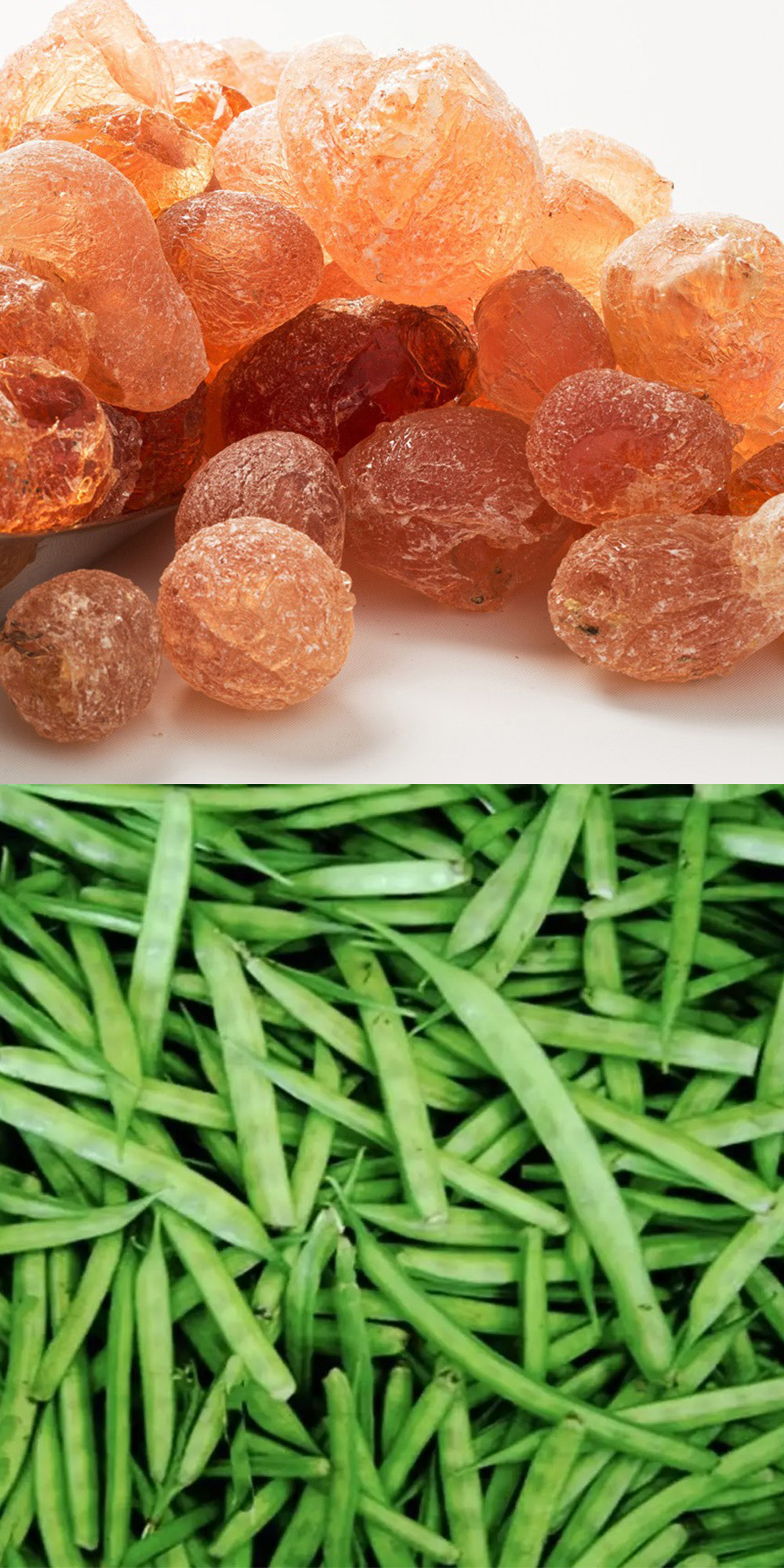
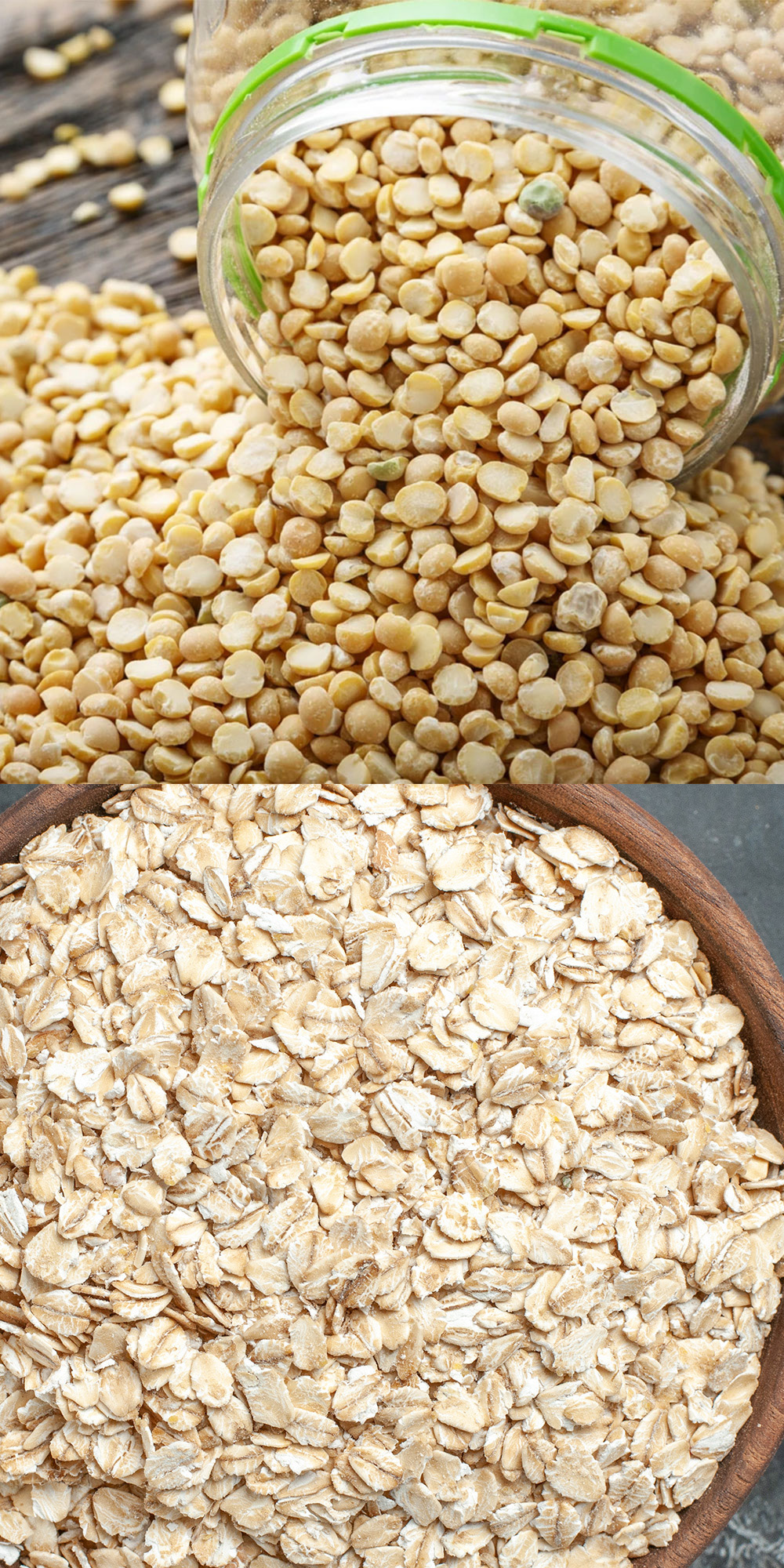
Acacia Gum,
Guar Gum,
Oat Bran,
Pea Fiber,
Apple Fiber,
Citrus Pectin
Cellulose
a fiber mixture that extracted from six types of vegetables, grain, legume and fruits, that achieving synergistic effect and maximize its benefit when ingested.
The water-soluble dietary fiber can reduce the cholesterol in the liver and the blood, and further inhibit the blood sugar spike in the sugar load test. It also play a big role in regulating insulin secretion and reducing the insulin in the blood. A.C.D.FRIAS and V.C.SGARBIERI studies found that food containing 10% to 20% water-soluble fiber concentration can effectively enhance satiation thus reduce food intake and body weight. Some other benefits also include increasing the length of the small intestine, delay the movement of ingested food in the intestinal tract, reduce the total amount of cholesterol and glycerin in the blood, increase the content of HDL-cholesterol and reduce the amount of LDL-cholesterol, also reduce the amount of total cholesterol being produced in the liver. In addition, as the 'food' of the pro-biotics, it can promote the proliferation of the beneficial bacteria and help to establish a good intestinal environment. The water-soluble dietary fiber can be decomposed by intestinal bacteria, subsequently activate large intestinal peristalsis.
Among them, the water-soluble fiber of oat bran is rich in β-glucan. More than 1000 papers and studies have been published on the functions of oat β-glucan in regulating blood sugar, blood lipid, softening blood vessel, preventing hypertension, strengthening body immunity, preventing cardiovascular and cerebrovascular diseases, relieve skin allergy, and controlling body weight. β-glucan is mainly concentrated on the embryonic cell wall and the subpaste powder layer, which is connected by β-(1-3), (1-4) glycoside bonds to form a tough, complex and relatively inert cell wall, which plays a role in supporting and protecting the biological cells and the biological active substances in the cell.
β-glucan, unlike other food ingredients, is not digestable in the stomach and intestines but absorbed directly through the small intestine. The macrophages on the intestinal mucous cells pass through the β-glucan receptor, and after absorbing the β-glucan, the macrophages are activated, thus playing the role of protecting and strengthening the immune system. Other immune cells, such as B and T cells, are also given signals to gather them around infected tissues and being activated to start functioning. In addition to the soluble fiber, the insoluble fiber is helpful for digestion and can prevent constipation. Like a brush, it brushes away the muck on the intestinal wall and drains out with feces. Therefore, it is beneficial for the constipation or the condition that the stool is not formed. More importantly, the intestinal detoxification keep the whole body clean and fresh, thus having an auxiliary conditioning effect on the skin problems as well as blood circulation system.
Acerola Cherry
Native to the Caribbean region of the tropical West Indies, so they are also known as West Indies cherry. It had been recognized as "king of natural vitamin C" and "fruit of life" ever since.
In addition to vitamin C and minerals, acerola cherry is rich in 11 important phyto-nutrients:
- Quinic acid-aromatic organic acid compound. The research shows that the invention has antioxidant effect, can enhance DNA repairing ability and has potential liver protecting effect.
- Caffeic acid-aromatic organic acid compound. The research shows that it may have antioxidant effect, nitrosation inhibition effect, antidepressant effect and liver protection effect.
- Ferulic acid is an aromatic organic acid compound. It has the functions of eliminating free radical, resisting oxidation, resisting microbe, resisting inflammation, etc.
- Chlorogenic acid-an aromatic organic acid compound. Research shows that the medicine has antioxidant activity, anti-microbial effect and pain relieving effect, and is favorable to cardiovascular health and has auxiliary hypoglycemic effect.
- Quercetin-a flavonoids in polyphenols. Studies have shown anti-inflammatory effects, as well as potential anti-diarrhea effects.
- P-coumaric acid, also called p-hydroxycinnamic acid, belongs to phenolic acid compounds in polyphenols. The study shows that the invention has the functions of scavenging free radicals, antioxidation and anti-platelet aggregation.
- Kaempferol, belongs to the flavonoids in polyphenols. The research shows that it has anti-inflammatory effect, and in vitro experiments show that it has the effect of inhibiting bone absorption, which is beneficial to bone health.
- Kaempferol-3-glucoside belongs to flavonoids in polyphenols. The study shows that it has anti-oxidation ability to remove the nitro-peroxide anion.
- Kaempferol-3-glucuronide belongs to flavonoids in polyphenols. The research shows that the invention has antioxidant activity.
- β-sitosterol-arterpene phytosterols. Studies have shown that it has reduced blood fat, as well as potential anti-cancer and anti-inflammatory effects.
- Rutin-flavonoids belong to the polyphenols. Research shows that it has anti-inflammatory effect and potential gastrointestinal protection effect



Broccoli, Kale, Cabbage
A mixture of three cruciferous vegetables that produces synergistic effects to maximize their health benefits in human body.
Cruciferous vegetables are rich in dietary fiber, vitamin A, vitamin K, vitamin C, potassium and phyto-nutrients, especially sulfur-containing compounds such as glucosinolates. Glucosinolates from brassica are a kind of glucosinolates in cruciferous vegetables, which are transformed into indole-3-methanol with various benefits through a series of metabolic processes. Cooking may slow or even stop the conversion process, so that more indole-3-carbinol might be obtained from eating them uncooked.
Food efficacy:
- Control of inflammation - chronic inflammation is considered the root cause of many health problems, such as heart disease, diabetes, obesity and tumors. Systemic inflammation participates in the development of various autoimmune diseases, including rheumatoid arthritis, type 1 diabetes, multiple sclerosis and inflammatory bowel disease. The study found that higher intake of cruciferous vegetables was associated with reduced inflammatory markers, including tumor necrosis factor α, interleukin-1β and interleukin-6. The effect may be due to that the cruciferous vegetables are rich in antioxidants, including β carotene, vitamin C, monisol, indole-3-methanol, etc., and can prevent oxidative stress, free radical damage and disease occurrence.
- Helping Tumor Prevention - Some studies have shown that regular intake of cruciferous vegetables can reduce the incidence rate of gastric, colorectal and lung cancer. The reduced risk of cancer may be associated with some of the anti-cancer substances contained in cruciferous vegetables, such as selenium and thioglycoside hydrolysates.
- Helping stable blood glucose level - Some studies have found that higher intake of cruciferous vegetables is associated with a lower risk of type 2 diabetes. Compared to 0.2 servings per day of cruciferous vegetables, 1.35 servings per day reduced the risk of diabetes by 14%. Besides, cruciferous vegetables are not only rich in dietary fiber, which slows the absorption of blood sugar, but they also contain a lot of antioxidants and other specific compounds that promote blood sugar control.
- Helping prevent obesity - cruciferous vegetables also play an important role in healthy weight loss. A large meta-analysis found that a single serving of cruciferous vegetables a day was associated with significant weight loss, and that excluding controls for exercise and other dietary factors, a single serving of cruciferous vegetables a day alone could result in an average weight loss of 0.6 kg over four years.
- Helping to maintain heart health - eating cruciferous vegetables can also reduce cardiovascular disease morbidity and mortality. In one study, the group that consumed the most cruciferous vegetables was found to have a 15.8% lower risk of cardiovascular disease than the group that consumed the least. In addition, some cruciferous vegetables improve blood lipid to enhance heart health and reduce the risk of heart disease. One study found that men who drank 150mL kale juice daily for 12 weeks had a 27% increase in good HDL cholesterol, a 10% decrease in bad LDL cholesterol, and a 24.2% decrease in plasma atherosclerosis index.
- F. Balance endocrine system – Due to rich in I-Gluconate, cruciferous vegetables and its extract is known for balancing estrogen in human body, particularly I-3-Carbinol, that has the functions of increasing the excretion of estrogen in urine to balance the hormone level in body. Estrogen itself plays an important physiological role in women, but its metabolite has some other role, for example, the I phase metabolism of estradiol involves a series of hydroxylation, some specific hydroxylate will act on the cytochrome enzyme system to participate in the occurrence of breast cancer and other hormone-related cancers.
Carrot
Known as mini ginseng. Carrots are rich in sugar, fat, volatile oil, carotene, vitamin A, vitamin B1, vitamin B2, anthocyanin, calcium, iron and other nutrients.
Food Efficacies :
- The carotene has molecular structure equivalent to two molecules of vitamin A, and after being ingested, 50% of the carotene is converted into vitamin A through the reaction of enzyme in the liver and the mucous membrane of the small intestine, and the carotene has the function of nourishing the liver and improving eyesight, and can improve night blindness drastically.
- Aiding body development of kids and juvenile - vitamin A is the essential substance for normal growth and development of bones, which is also helpful to the cell proliferation and growth, and is an essential factor for the growth of the body, and has important significance for promoting the growth and development of young children.
- Enhance immunity – Conversion of carotene into vitamin A, helps to enhance human body's immunity, and plays an important role in the prevention of epithelial cell carcinogenesis. Lignin in carrots also improves immune mechanisms and indirectly destroys cancer cells.
- Lowering blood lipid and glucose – Carrot contains some potent substance which is beneficial to diabetic patient, such as quercetin, kaempferol that also improve blood flow in coronary artery, lower blood lipid, promoting synthesis of adrenaline. Combined them all, carrot is indeed a super food for patients that suffer from chronic diseases.
- Vitamin A is essential for the normal development of bone, which is conducive to the reproduction and growth of bone cells.
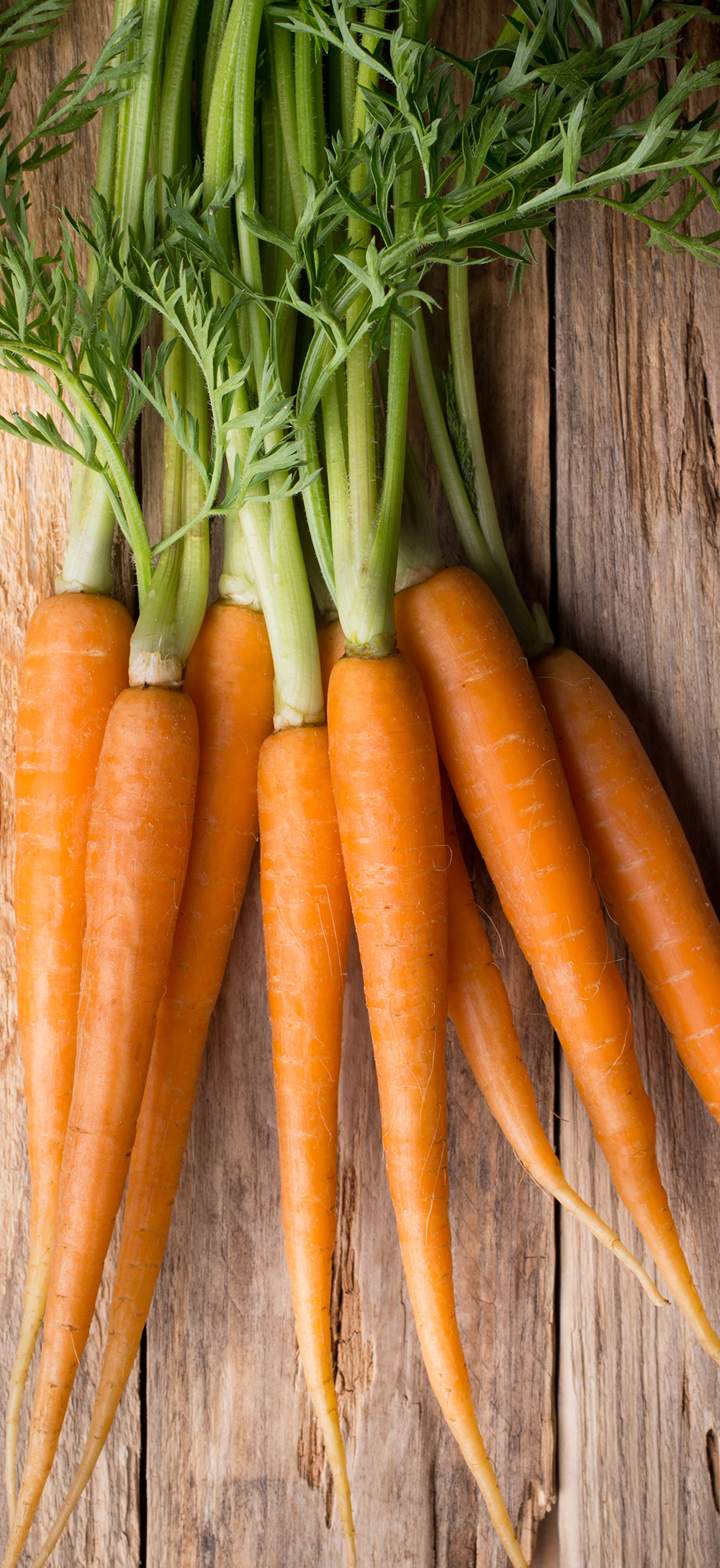
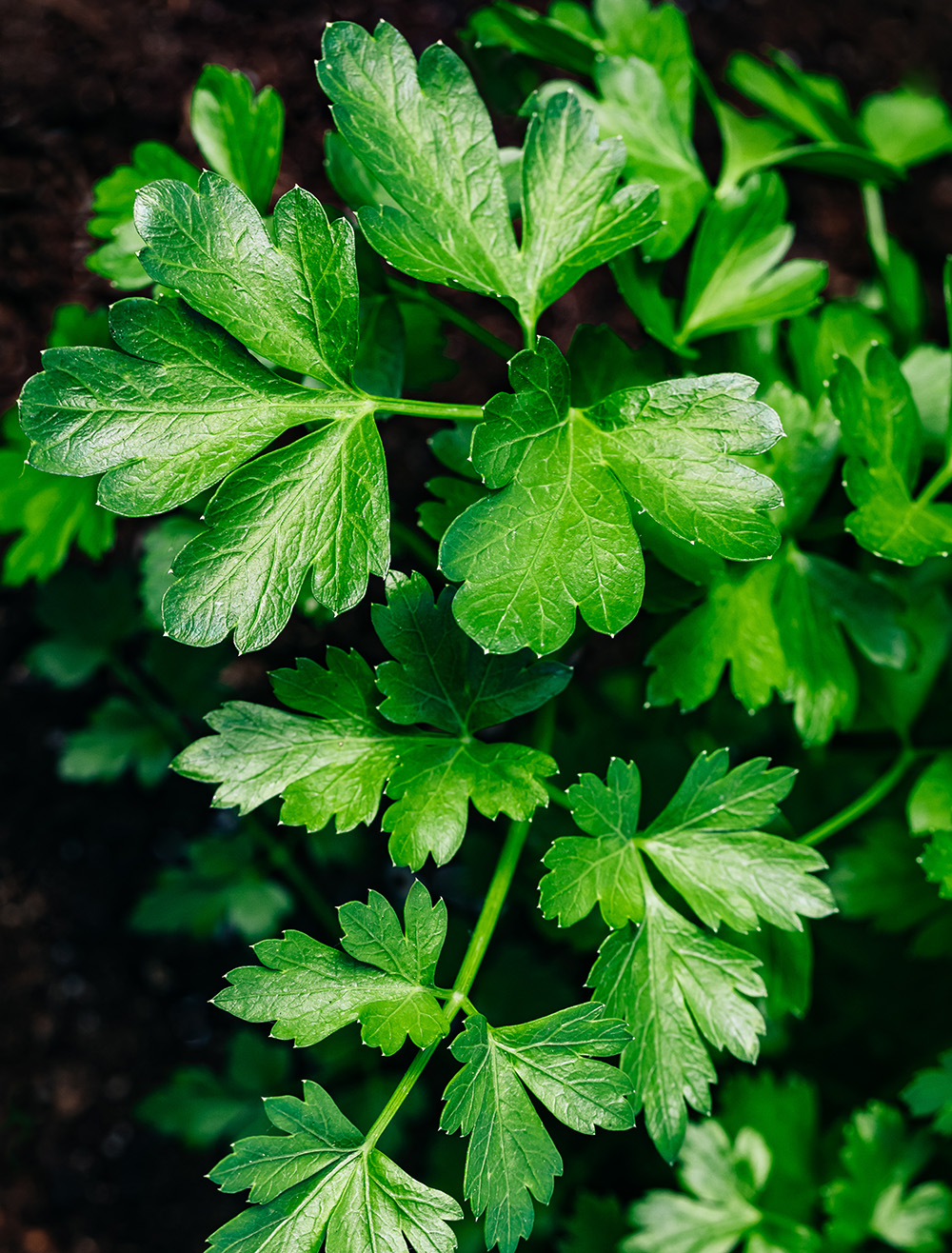
Parsley
also known as cilantro and coriander in different region, which come from the same botanical family, called Apiaceae, and are equally nutritious. The main nutritive components are protein, carotene, calcium, phosphorus and iron. The tender stem and leaf of parsleyr also contains mannitol, decanal, nonanal and linalool, which contributes to its special flavor. Modern pharmacological study found that saponin from parsley root can protect vascular endothelial cells and prevent cell aging, so as to dilate blood vessels and promote blood circulation. This further confirms the therapeutic effect of parsley root on coronary heart disease. At the same time, the flavonoids, multivitamins, trace elements and other substances contained in the coriander also have the functions of anti-cancer, kidney protection, blood sugar reduction, etc. Parsley contains mannitol, linalool and other volatile oil substances, which can increase saliva secretion, accelerate gastrointestinal peristalsis and promote appetite.
Spinach
Also known as Persian grass. Spinach is rich in vitamin A, vitamin C and minerals, especially vitamin A and vitamin C that are among top of all vegetables, and the content of human hematopoietic substance iron is more than other vegetables. The spinach has special dietotherapeutic effects on gastrointestinal disorders, constipation, gout, dermatosis, various neurological diseases and anemia. It also has the effect of neutralize toxic effect of alcohol and preventing the phenomenon of abscess in the tooth trough. Spinach contains a lot of β carotene and iron, and is an excellent source of vitamin B6, folic acid, iron and potassium. The rich iron has the function of improving iron deficiency anemia, and able to induce face radiant, so the iron is promoted as a good beauty product. Spinach leaves contain chromium and an insulin-like substance, which acts very similar to insulin and keeps blood sugar stable. The rich vitamin B content enables it to prevent the occurrence of vitamin deficiencies such as keratitis, night blindness, etc. Spinach contains a large amount of antioxidants, such as vitamin E and selenium, which has anti-aging and cell proliferation promoting effects, not only can activate brain function, but also can enhance youth vitality, help to prevent brain aging and prevent Alzheimer's disease. A Harvard University study also found that middle aged and elderly people who eat spinach 2-4 times a week, from their intake of vitamin A and carotene in Spinach, the risk of retinal degeneration is largely reduced.
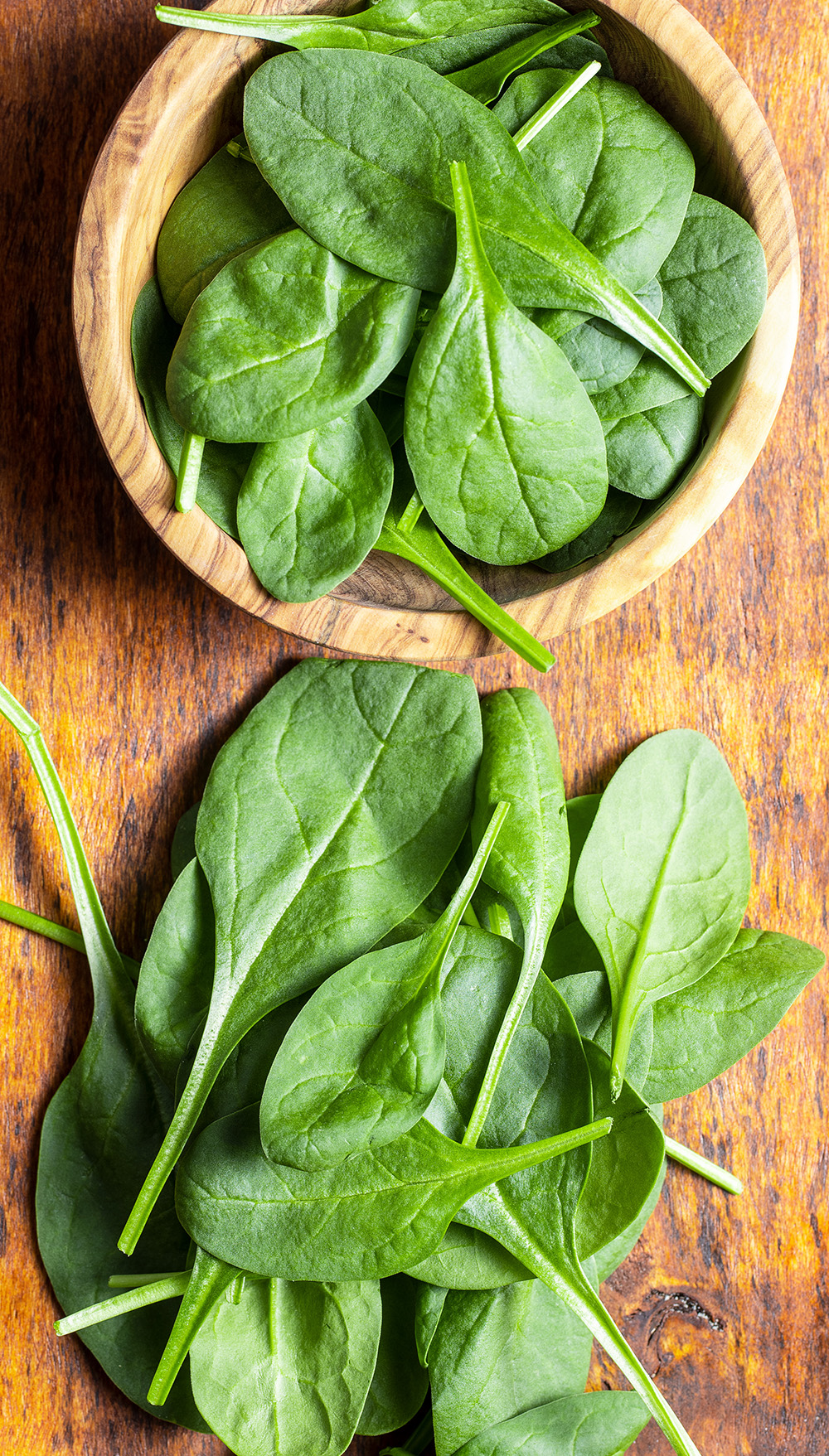

Tomato
contains vitamin and mineral elements that protect the cardiovascular system and reduce heart attacks.
The most substantial phyto-nutrient of tomato, Lycopene, has unique antioxidant capacity.It can eliminate free radical, protect cells, prevent DNA and gene from damage, and prevent cancer progression. Besides preventing prostate cancer, the tomato can effectively reduce the risk of pancreatic cancer, rectal cancer, throat cancer, oral cancer, lung cancer, breast cancer and other cancers.
The vitamin C in tomato has excellent therapeutic effect on hypertensive and renal disease patients.
Nicotinic acid helps maintaining the normal secretion of gastric juice, promote the formation of red blood cell, and is favorable for maintaining the elasticity of blood vessel wall and protecting skin. Therefore, consuming tomatoes can also help prevent arteriosclerosis, hypertension and coronary heart disease. The tomatoes are urine-friendly and suitable for patients with nephritis.
In patients with frequent gingival bleeding or subcutaneous bleeding, consuming tomatoes helps improving symptoms.
Tomatoes contain malic or citric acid, which helps digestion of fat and protein.
Green Tea
is a non-fermented tea, and is made by high-temperature finishing to keep the original green of fresh leaves. The main components of green tea with therapeutic effect are tea polyphenol, caffeine, lipopolysaccharide, theanine, etc.
Food efficacy:
- The tea polyphenol has strong antioxidant and physiological effect, which also function as scavenger of free radical. The study proves that the effect of 1 mg tea polyphenol on eliminating excessive free radical harmful to human body is equivalent to 9 mg superoxide dismutase, which is much higher than other similar substances. The tea polyphenol has the functions of blocking lipid peroxidation reaction and clearing active enzyme. According to the results of the Japanese Okuda experiment, the anti-aging effect of tea polyphenol is 18 times stronger than vitamin E.
- Prevention of cardiovascular disease - Tea polyphenols have an important role in human fat metabolism. Whenever blood cholesterol and triglyceride are high, chances of lipid deposition on the inner wall of the vessel and the formation of atherosclerotic plaques after the proliferation of vascular smooth muscle cells, are much higher. Tea polyphenols, especially catechin ECG and EGC in tea polyphenols and theaflutinin, which is the oxidation product of tea polyphenols, can help to inhibit the plaque hyperplasia, reduce the fibrinogen which forms the enhanced blood coagulation viscosity, and the coagulation and serum, thereby inhibiting atherosclerosis.
- Anti-carcinogenesis - to help prevent and fight cancer. Tea polyphenol can block ammonium nitrite and other carcinogenic substances to synthesize in vivo, and has the effects of directly killing cancer cells and improving body immunity. The tea polyphenols in tea may be used in preventing and treating gastric cancer, intestinal cancer and other cancers.
- Anti-bacterium-tea polyphenol has strong astringency, obvious inhibition and killing effect on pathogenic bacteria and virus, and significant effect on diminishing inflammation and stopping diarrhea. Many medical units in China use tea therapy to treat acute and chronic diarrhea, amoeba diarrhea and influenza with a cure rate of about 90%.
- The amount of fluorine contained in the green tea is relatively higher. Fluorine contained in each 100g dry tea is 10mg-15mg, and 80% of them is water-soluble. Given that every consumption of 10g of tea leaves per day, the water soluble fluorine 1 mg-1.5mg can be easily absorbed. Tea is an alkaline beverage, which can inhibit the reduction of calcium in human body, and is beneficial to preventing tooth decay, gum protection and tooth firmness. A common practice among Chinese primary school students, the "after-drink tea gargle" test can reduce the tooth decay rate by 80%. Tea habit among cataract patients was 28.6%; while 71.4% of them had no tea habit. Reason behind is because the vitamin C and other components in the tea can reduce the turbidity of the crystal lens.
- Reducing Blood lipid – The TCM masterpiece in Tang Dynasty < Supplements to Materia Medica> concluded a finding on green tea that “consistent consumption of green tea induce slimmer body”. Tea is an important aid to digestion and fat metabolism. This is because the caffeine in the tea can increase the amount of gastric secretion and help digestion. Green tea is also rich in catechin, which helps reduce abdominal fat.
- Gene epigenetic regulation - The Chinese team found that a small, natural molecule in green tea can act as a "manipulator" for cells, allowing a custom-made cell to "follow suit" and release therapeutic substances regularly and quantitatively. The team, in a recent paper published in the American journal Science Translational Medicine, said they designed and synthesized a genetically engineered expression control system using the green tea's secondary metabolite, protocatechuic acid. The system can be regulated by protocatechuic acid like a "switch." The researchers installed the control system in human cells, where they encoded certain gene fragments that were regulated by procatechin to create and release drugs such as insulin. When such cells are implanted in the body, it is expected that they will be given simply by drinking a custom-made concentrated green tea. The researchers also combined gene editing technology to make green tea as a switch for gene editing to control gene expression.

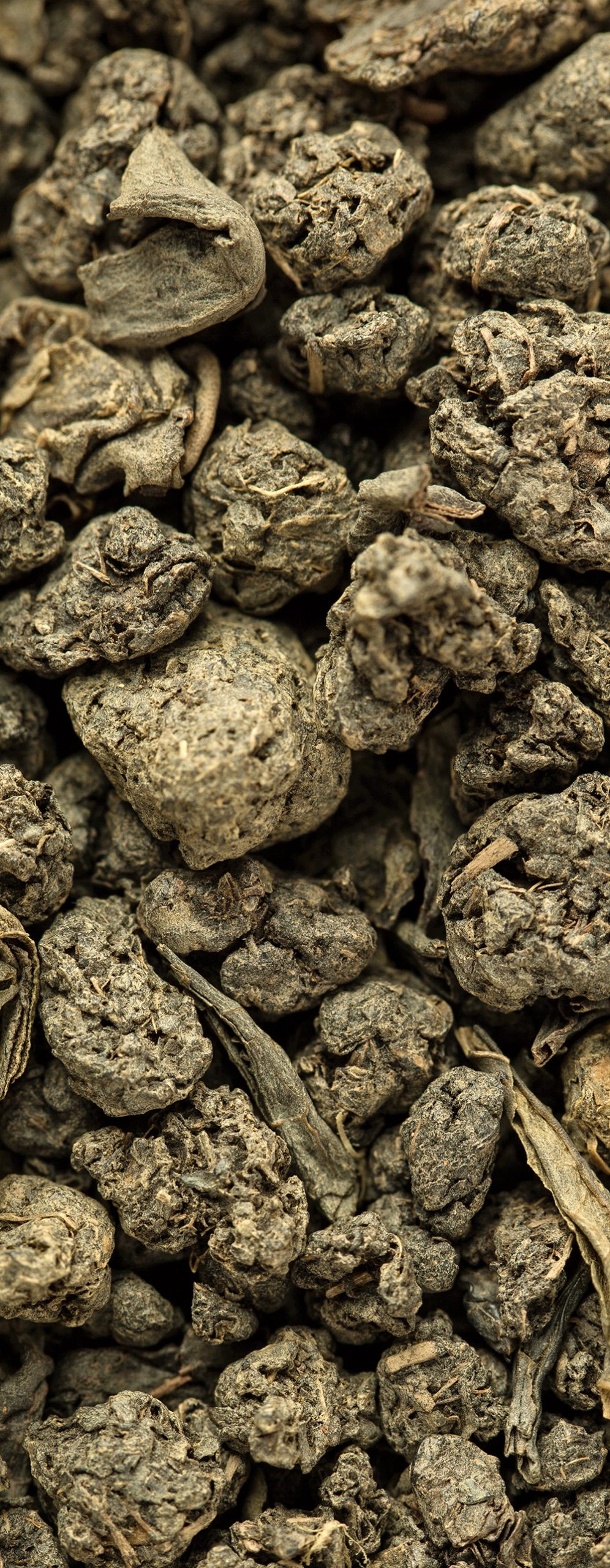

Borage Oil
Also known as Star Flower, it highly popular among Europeans as remedy since 700 years ago. Borage seed is having most abundant component of GLA (γ-linolenic acid) among all plants. Other than that GLA can only be found in breast milk, which is an essential fatty acid for human. It has the special effects of moisturizing, activate and whiten skin .It is also called as the "protector of women".
The noble character of borage oil may be derived from its rich contents of calcium, potassium and minerals. In recent years, borage seed oil has been very well known its rich content of Omega-6 polyunsaturated fatty acid. The most precious polyunsaturated fatty acid, GLA, can be found in Borage Oil, reaching a highest concentration of 25% to 30%, which is also three fold compared to evening primrose oil (the second highest content of botanical originated GLA). GLA is essential for producing prostaglandin PGE1.
Food efficacy:
- Regulator of cellular function - controlling the function of each cell, tissue and organ in the human body. GLA is essential in helping human body to reach the peak of metabolism. It was originally formed by converting linolenic acid in food. PGE1 has a wide range of benefits in humans, but the way the substance is converted into production may be blocked in some situation, especially over age of 30, the transition is slowed down. Consuming borage oil is like skipping the hurdle and giving the body direct raw material supply that produce PGE1. Prostaglandin PGE1 can inhibit clotting of platelets and reduce the risk of blood clotting. helping the vessels to dilate, ensuring proper blood flow to and from the heart, and also helping to improve the blocking factors of atherosclerosis. It also helps reduce cholesterol produced in the liver.
- Improve immunity - borage oil controls the release of lymphokines, reducing the proliferation of immune cells so as not to attack other cells in the body (a situation that occurs largely in autoimmune diseases such as rheumatoid arthritis) and also reduces the production of histamine, helping to prevent widespread allergy reactions; Also, it reduces pain and fights inflammation.
- Improve endocrine system - It stimulates the production and secretion of major hormones, including human growth hormone, in the thyroid, adrenal and pineal glands. It can increase the reception and secretion of the nervous system signal, which can reduce the need for sleep and help alleviate depression. It also function as a powerful suppressor of insulin secreted from the pancreas, creating a benign reaction cycle that helps sustain the highest levels of metabolism. PGE1 also inhibits the secretion of gastric acid to avoid tumors.
- Better respiratory system – It can relieve the bronchial tissue, reducing the frequency of wheezing.
- Improve pre-menstrual syndrome, diabetes, and Sjogren syndrome groups include the following symptoms of the syndrome groups: dyskinesia, eczema, rheumatic arthritis and other skin problems of dry keratitis, dry laryngopharyngitis, dry rhinitis, parotitis and multiple arthritis. All of the above have clinically shown improvement under impact of GLA.
- It is also effective in lowering cholesterol and fighting cancer. It can kill brain cancer and prostate cancer cell, and also can regulate the growth of capillaries, so as to prevent the spread of malignant tumor.
Extra Virgin
Olive Oil
Ever since thousands of years in Mediterranean Diet and Culture, olive oil has been the foundation of it. It is also known as "liquid gold," "queen of vegetable oil" and "Mediterranean Nectar." The first-grade extra-virgin olive oil is the highest grade and highest quality olive oil, which is a pure natural product. It has excellent taste with a nice, light touch of fragrant and no more than 1% acidity.
Olive oil is rich in monounsaturated fatty acids, and also rich in vitamins A, B, D, E, K and antioxidants. Olive oil is considered to be the most suitable oil for human nutrition in edible oils found so far.
The olive oil is characterized in that it contains a large amount of monounsaturated fatty acid. The unsaturated fatty acid not only supply energy, but also adjust the proportion of high and low density lipoprotein cholesterol, increase the level of high density lipoprotein HDL (good cholesterol) in human body and reduce the level of low density lipoprotein LDL (bad cholesterol), thereby preventing the excessive cholesterol in human body. Therefore, the olive oil can effectively play the function of reducing blood lipid for carnivore that lead to excessive intake of saturated fatty acid and cholesterol, thereby preventing hyperlipemia, fatty liver and cardiovascular disease. It also reduce the risk of occurrence of chronicle diseases such as hypertension, coronary heart disease and stroke.

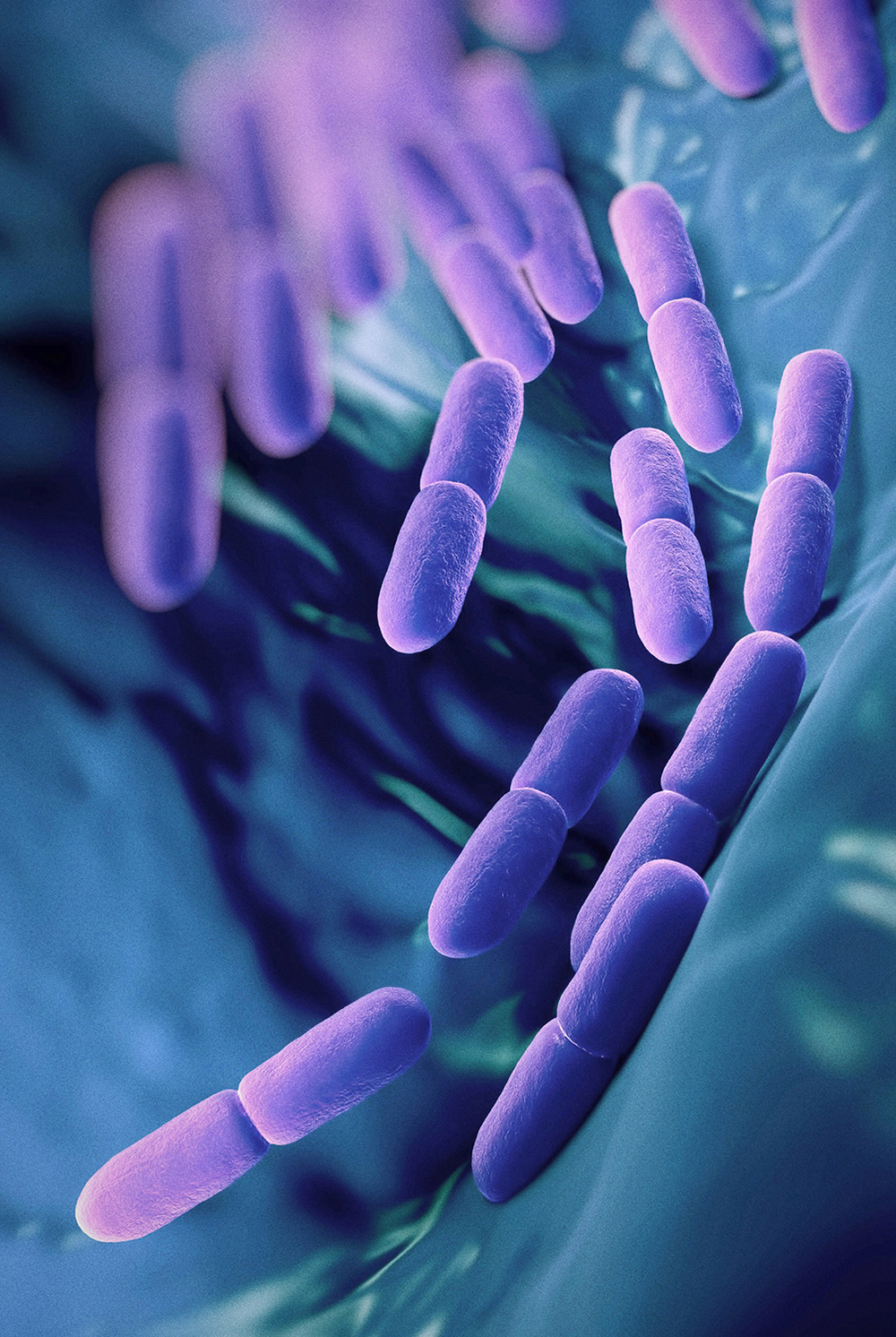
Probiotics and Probiotics
when probiotics and probiotics are combined together, they are called synbiotics. The synbiotics of the Swiss Nutrition Solution are composed of inulin (FOS fructose), lactobacillus and bifidobacterium.
A well-established feature of a healthy gut environment is the diversity of microbes. Increasing the diversity of microbial communities can increase their resilience. If you have a large number of probiotics in your gut, there is less room left for harmful bacteria to live in for a long time.
Intake of prebiotic fibers (trophoblast) and probiotic foods (providing live bacteria) is also part of the healthy diet formulation. A diverse diet rich in fiber and its adequate impact on the microbiome is an important link for health. This is one reason why the Swiss Nutrition Solution has emphasized the use of more fruits, vegetables, and whole grains in Nutrition Mix.
